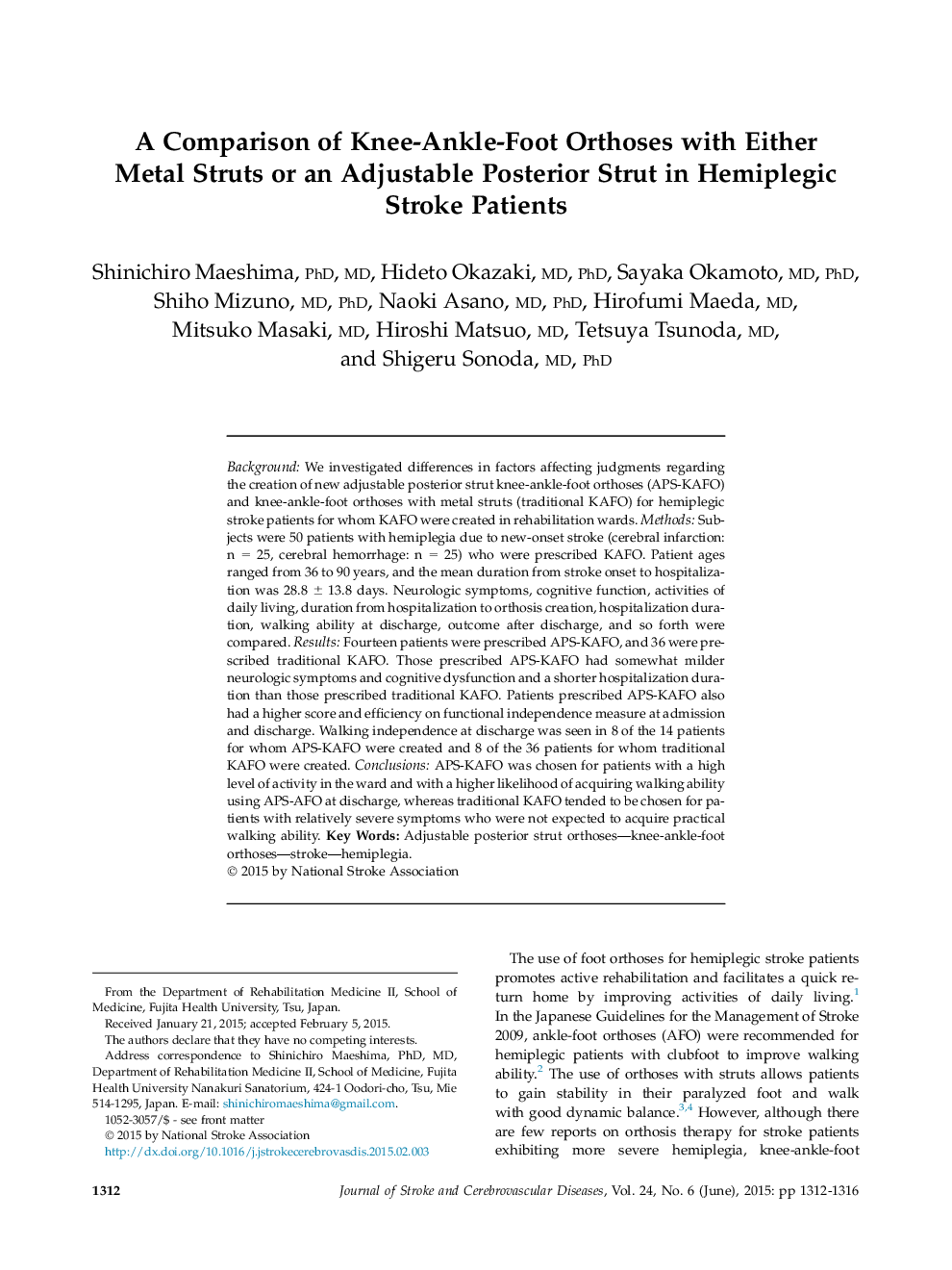| کد مقاله | کد نشریه | سال انتشار | مقاله انگلیسی | نسخه تمام متن |
|---|---|---|---|---|
| 5873860 | 1144654 | 2015 | 5 صفحه PDF | دانلود رایگان |
BackgroundWe investigated differences in factors affecting judgments regarding the creation of new adjustable posterior strut knee-ankle-foot orthoses (APS-KAFO) and knee-ankle-foot orthoses with metal struts (traditional KAFO) for hemiplegic stroke patients for whom KAFO were created in rehabilitation wards.MethodsSubjects were 50 patients with hemiplegia due to new-onset stroke (cerebral infarction: n = 25, cerebral hemorrhage: n = 25) who were prescribed KAFO. Patient ages ranged from 36 to 90 years, and the mean duration from stroke onset to hospitalization was 28.8 ± 13.8 days. Neurologic symptoms, cognitive function, activities of daily living, duration from hospitalization to orthosis creation, hospitalization duration, walking ability at discharge, outcome after discharge, and so forth were compared.ResultsFourteen patients were prescribed APS-KAFO, and 36 were prescribed traditional KAFO. Those prescribed APS-KAFO had somewhat milder neurologic symptoms and cognitive dysfunction and a shorter hospitalization duration than those prescribed traditional KAFO. Patients prescribed APS-KAFO also had a higher score and efficiency on functional independence measure at admission and discharge. Walking independence at discharge was seen in 8 of the 14 patients for whom APS-KAFO were created and 8 of the 36 patients for whom traditional KAFO were created.ConclusionsAPS-KAFO was chosen for patients with a high level of activity in the ward and with a higher likelihood of acquiring walking ability using APS-AFO at discharge, whereas traditional KAFO tended to be chosen for patients with relatively severe symptoms who were not expected to acquire practical walking ability.
Journal: Journal of Stroke and Cerebrovascular Diseases - Volume 24, Issue 6, June 2015, Pages 1312-1316
